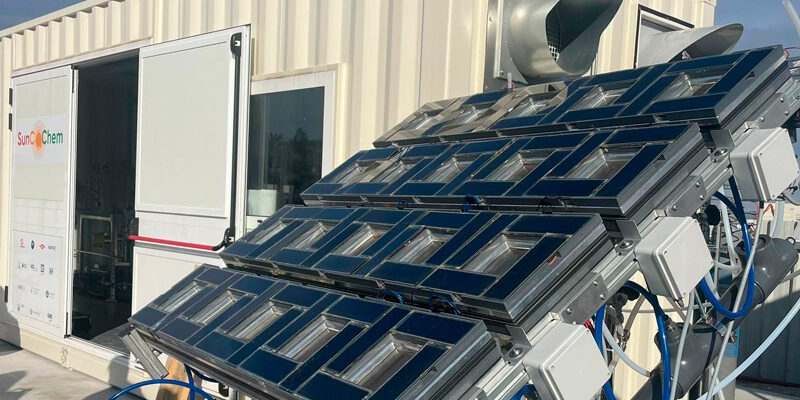Transforming industrial CO2 emissions into sustainable chemical products
- The European SunCoChem project has developed a sustainable alternative to produce valuable chemicals using solar energy and carbon dioxide (CO2) sourced from chemical industry’s waste.
- The innovation involves capturing CO2 from flue gases using patented selective membranes, converting the captured CO2 and water into syngas through advanced photoelectrocatalytic reaction, performing hydroformylation reactions with olefins to produce the desired oxo-chemicals.
- The system will lower CO2 emissions and enhance solar energy conversion efficiency enabling the production of chemicals without relying on fossil fuels.
The European SunCoChem sustainable chemistry project has developed a reactor prototype to manufacture chemicals using renewable energies drawing on carbon dioxide (CO2) recovered from the chemical industry and solar energy.
“The goal of the project is to offer the chemical industry a sustainable alternative for producing chemicals without relying on fossil fuels,” says Dr María Navarro, the SunCoChem project coordinator from the Eurecat technology centre.
SunCoChem’s innovation consists of a reactor that integrates three critical processes. First, it captures CO2 from flue gases using selective patented membranes, generating a concentrated CO2 stream. Second, this CO2 is converted into syngas (a mixture of CO and H2) through a photoelectrocatalytic reaction. Finally, the syngas is used in hydroformylation reactions with olefins to produce the desired oxo-chemicals used in cosmetics and food production.
SunCoChem aims to employ a photoelectrochemical pathway for the conversion of CO2 into CO, serving as an intermediate for chemical carbonylation synthesis. Dr. Adrianna Nogalska, the project’s scientific coordinator and Head of Hydrogen Technologies at Eurecat’s Chemical Technology Unit, emphasizes that this innovative solution has the potential to significantly reduce carbon footprints in industrial processes, thereby facilitating the transition to a more sustainable and greener future of the society. The system has been tested in laboratory, to produce Limoxal™, a material sold by IFF as a perfuming agent and used in personal care and household cleaning products. Life cycle assessment studies have shown that this reactor can reduce carbon emissions by 25% compared to current fossil fuel-based methods, due to its reliance on renewable carbon sources.
Furthermore, SunCoChem “addresses key challenges that are currently holding back photoelectric organic processes and reaches beyond the state-of-the-art to develop and validate more efficient and scalable energy production,” notes Prof. Simelys Hernández, the project’s technical coordinator from Politecnico di Torino (Italy).
The success of the project is driven by a multidisciplinary consortium, whose diverse expertise and collaborative efforts have been key to advancing innovative, sustainable solutions for the chemical industry. Funded by the European Union’s Horizon 2020 programme, the SunCoChem project consists of a consortium of 14 partners from eight European countries, including technology and research centres. Eurecat, which is coordinating the project, Politecnico di Torino, Helmholtz-Zentrum Berlin für Materialien und Energie GmbH, Istituto Italiano di Tecnologia and the French National Centre for Scientific Research (CNRS) developed advanced materials (catalysts electrodes and membranes); small and medium-sized enterprises: Solaronix, Avantium, Laurentia and IOLITEC contributed in materials development and scaling-up of their preparation processes; an engineering firm: Hysytech manufactured the protype and TRL5 plant; chemical corporations: DOW and IFF as future end-users provided process and products specifications; and operational support partners: the Spanish Association for Standardisation (UNE) and the International Hellenic University, helped in standardisation and social acceptance analyses.



